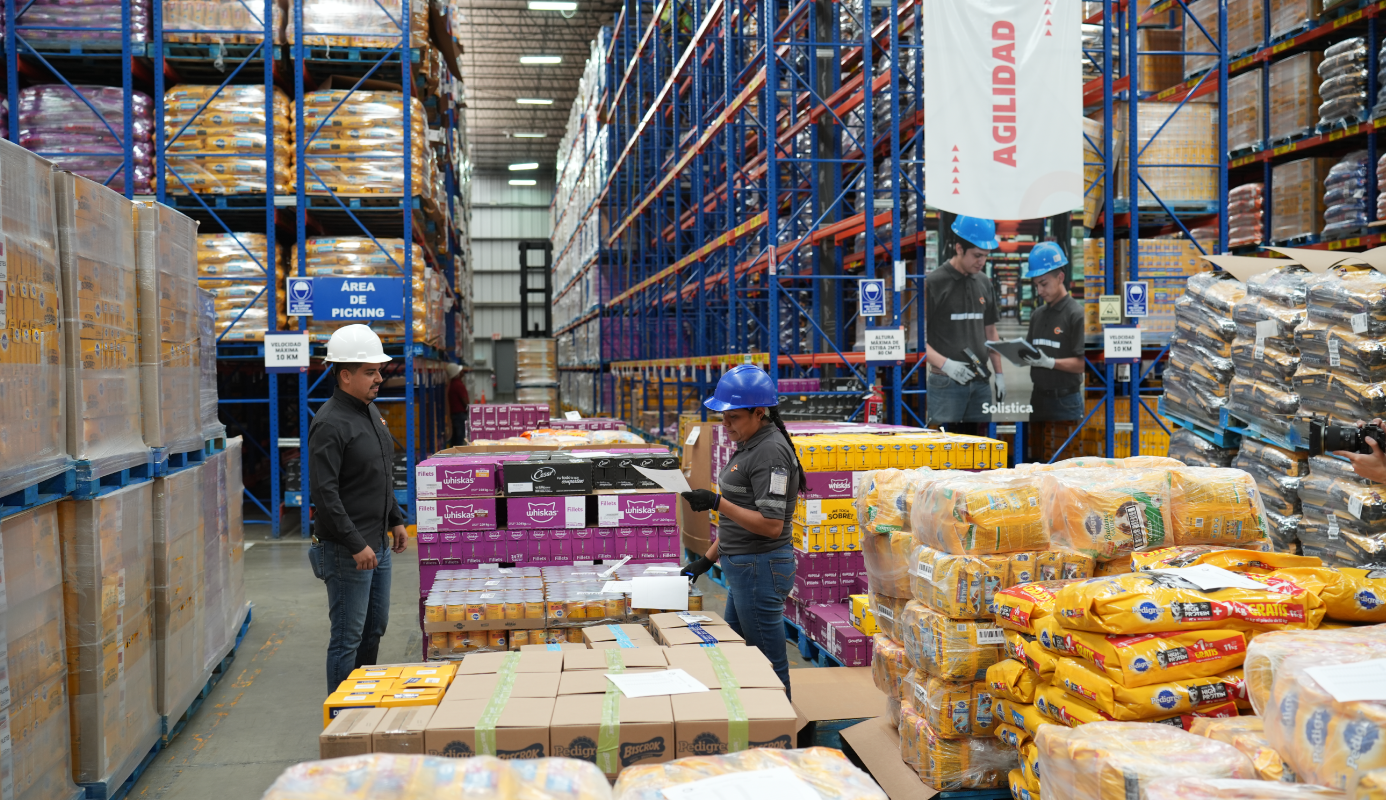Faced with the challenges and opportunities presented by the supply chain and inventory management industry, choosing the right approach to inventory management can make the difference between success or failure for a company. Among the various strategies available, LIFO (Last In, First Out) or UEPS (Last In, First Out) stands out as an option that, under certain circumstances, can offer significant advantages in both logistical and accounting terms.
What is a LIFO method and how does it work?
The LIFO method is an inventory management strategy that assumes that the last items to enter the warehouse are the first to leave. This approach contrasts with the more commonly used FIFO (First In, First Out) method, where the first products in are the first out.
In practice, LIFO operation involves a specific warehouse layout and product arrangement. Goods are stacked in such a way that the newest incoming goods are the first out when a product is needed. This configuration requires specialized storage systems that allow the newest product to be placed at the front, facilitating priority access and output. (Blog - ACROSS LOGISTICS)
Storage systems that facilitate LIFO management
To effectively implement the LIFO method, storage systems designed specifically for this purpose are required. Some of the most commonly used are:
Push-Back Racking
This high-density flow storage system uses push-back force to store pallets deep. The load is moved by trolleys or rollers, and both loading and unloading are done from the same end.
Drive-in pallet racking
This is a system that compacts the working aisles, providing a single access aisle for the forklift to enter the rack and perform loading and unloading operations.
AR shuttle system for pallets
This high-density, semi-automatic solution uses motorized satellite carts to move unit loads autonomously through the rack. Its versatility allows for both LIFO and FIFO warehouse management, depending on how the system is designed.
The common feature of these systems is that the loading and unloading of goods is done from the same aisle, which contributes to the efficiency of the LIFO method. (Blog - AR - Ranking)
Logistical and accounting advantages of the LIFO method.
The implementation of the LIFO method can offer a number of significant benefits for companies that adopt it:
Logistics advantages
- Reduced distances: By working in the same aisle for loading and unloading, the distances traveled by operators and forklifts in the warehouse are minimized.
- Higher occupancy ratio: By using only one loading aisle, the available space in the warehouse is optimized.
- Increased storage speed: Products can be stacked as they arrive, which increases the speed of the storage process.
Accounting advantages
- Tax reduction: In periods of rising prices, the LIFO method tends to generate a higher cost of goods sold (COGS), which can result in lower taxable income and thus a lower tax burden.
- Inflation protection: By more directly reflecting price increases in COGS, LIFO helps preserve the company's gross margin and protects its profit margins in inflationary environments.
- Greater fiscal efficiency: LIFO allows for a more accurate alignment between inventory costs and actual revenues, providing a more accurate picture of the company's profitability and operating efficiency.
- Costs closer to market price: The cost of materials issued will better reflect the current market price, which can be beneficial in terms of inventory valuation and financial decision making. (Artículo - Darsena21)
When to use the LIFO method?
LIFO is particularly suitable in certain situations and for certain types of products:
- Non-perishable products: Ideal for items that do not have a close expiration date and do not degrade over time, such as electronics, furniture or building materials.
- Homogeneous products: When products are relatively uniform and do not require extensive stock rotation, LIFO can be efficient. This is common in industrial environments where large quantities of identical materials are stored.
- Large number of pallets per SKU: If the company handles a significant volume of pallets for a specific product, the LIFO method can help make the most of available warehouse space.
- Companies with the ability to maintain considerable stock levels: LIFO is advisable for those companies that can maintain a considerable stock level and do not need a frequent rotation of their products.
- Specific industries: It is especially suitable for the storage of construction products, where the LIFO method is perfectly adapted to the characteristics of materials such as ceramics, glass or stone materials. (Blog - ACROSS LOGISTICS)
Considerations and potential disadvantages
Despite its advantages, the LIFO method also presents some considerations and potential disadvantages that companies should be aware of:
- Distorted inventory valuation: By keeping older costs in inventory, a distorted inventory valuation may be reflected, especially in periods of rising prices.
- Impact on financial ratios: The use of LIFO can affect certain financial ratios, such as average unit cost and gross margin, which can make it difficult to compare with other companies or industries using different methods.
- More complex management: The LIFO method may require additional record-keeping and tracking to maintain accurate control of costs and inventory turnover, which can increase the administrative and accounting burden on the company.
- Accounting regulations: The use of the LIFO method may be subject to specific accounting regulations and requirements depending on the country and applicable regulations, which requires a thorough understanding of the legal and financial implications prior to implementation. (Artícle - Darsena21)
Maximizing the benefits of the LIFO method.
To get the most out of the LIFO inventory management system, companies can adopt the following strategies:
- Use of IT solutions: Implementing reliable inventory management systems is indispensable for accurate inventory tracking and management under the LIFO method.
- Constant control of stock levels: It is essential to know product demand and schedule orders efficiently to avoid unnecessary inventory accumulations.
- Storage space optimization: Making the most of available warehouse space can reduce costs and improve inventory management efficiency.
- Staff training: Ensuring that the logistics and accounting team is well trained in the application and implications of the LIFO method is vital to its success.
- Periodic review: Conducting regular evaluations of the effectiveness of the LIFO method in relation to company objectives and market conditions can help adjust the strategy as needed.
Choosing the LIFO method as an inventory management strategy can offer significant advantages in terms of logistical efficiency and accounting benefits for certain types of companies and products. However, its implementation requires careful consideration of the specific characteristics of the business, the regulatory environment and the organization's financial goals.
Find out with Solistica how the LIFO method can revolutionize your logistics. Consult our specialists today and take the leap towards a more profitable warehouse management.






